I was recently interviewed for a Mashed.com article discussing the most common mistakes home cooks make when sautéing and it got me thinking of all of the techniques we teach at The Chopping Block, not to mention the wealth of information our blog offers. I have written about frying, broiling, and smoking but never about sautéing. It is my most common method of cooking at home, so I thought I would share my tips and tricks when it comes to sautéing.
First, what is sautéing? Sautéing is a direct dry heat method of cooking using fat under high heat to cook food. This method is mainly used for vegetables, and it is important because it is such a quick and versatile method of cooking.
1. One of the most important things to consider is using the right pan. I mainly look for surface area when choosing the right sauté pan for cooking. Having a heavy bottom that conducts heat evenly like a high end stainless steel or cast iron are my top picks. When sautéing, you don’t want to overload the pan, the food should be in an even layer across the bottom. It is better to work in batches than trying to sauté everything at once.
2. Another really important tip is choosing the right oil. We recommend always using a high smoke point/neutral flavored oil such as grapeseed for sautéing. Avocado oil, canola, or veggie oils are good as well. Try never to sauté in olive oil because the pan gets too hot and burns the olive oil resulting in a bitter flavor. Chef Drake Mandrell has an excellent blog on how to make sense of all the cooking fats.
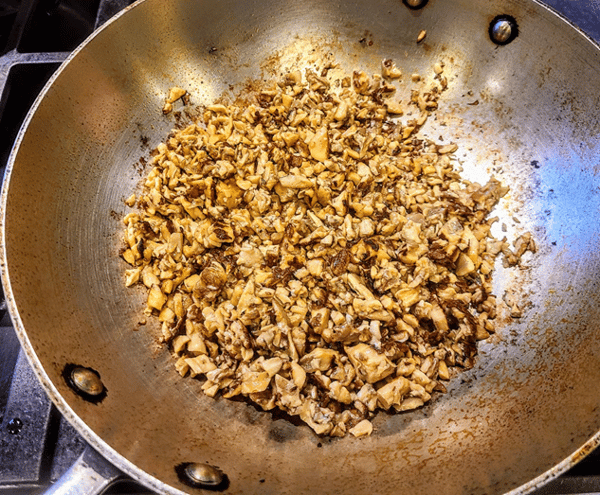 3. You should always preheat your pan before sautéing. I believe in adding the oil to the pan and preheating them together. When the oil starts shimmering or just about to smoke is the indicator of when the pan is hot enough to start sautéing. It is best to sauté on a medium high heat. It is always easier to turn down the heat but it is harder to bring it back up again. If you start too low then you run the risk of absorbing much of the fat and ending up with soggy vegetables. If you start to high you risk burning before cooking through. There are different schools of thought on this matter. Owner/Chef Shelley Young has a great tutorial of how to preheat your pan so food does not stick.
3. You should always preheat your pan before sautéing. I believe in adding the oil to the pan and preheating them together. When the oil starts shimmering or just about to smoke is the indicator of when the pan is hot enough to start sautéing. It is best to sauté on a medium high heat. It is always easier to turn down the heat but it is harder to bring it back up again. If you start too low then you run the risk of absorbing much of the fat and ending up with soggy vegetables. If you start to high you risk burning before cooking through. There are different schools of thought on this matter. Owner/Chef Shelley Young has a great tutorial of how to preheat your pan so food does not stick.
4. Overcrowding the pan is something that should be avoided when sautéing. There should be very minimal overlap of food in the pan. Ideally if you can still see the bottom of the pan just a tiny bit through all of the food that is a good amount. If your sauté pan is too big and there is extra space the food will cook more quickly and will need to be stirred more to prevent burning on the sides of the pan.
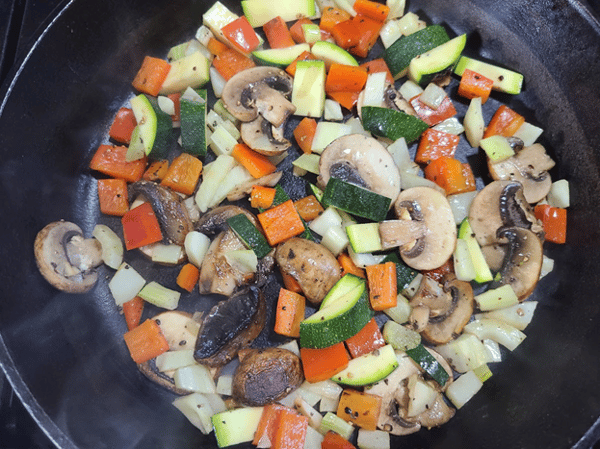 5. Dumping everything in the pan all at once is the mistake I see students make most often in our classes. Starting with more fibrous veggies then adding in vegetables that have a higher water content is the order of operations I follow when adding things to the pan. But you can’t go wrong with doing all one veggie then taking it out of the pan, then sautéing another veggie… so on and so forth until everything is cooked then combined at the end for a quick reheat. This is how I approach my stir fries. Ingredients should be at room temperature for even cooking.
5. Dumping everything in the pan all at once is the mistake I see students make most often in our classes. Starting with more fibrous veggies then adding in vegetables that have a higher water content is the order of operations I follow when adding things to the pan. But you can’t go wrong with doing all one veggie then taking it out of the pan, then sautéing another veggie… so on and so forth until everything is cooked then combined at the end for a quick reheat. This is how I approach my stir fries. Ingredients should be at room temperature for even cooking.
6. When seasoning with salt and pepper, it should be happening in the beginning of the cooking process and throughout as necessary. Try to have an even surface area coating the top layer of food with seasonings in general. When adding dried herbs and spices wait until the vegetables are about 50% done before adding otherwise, they can burn before the vegetables are cooked properly. When using fresh herbs my motto is “finish with fresh” the fresh herbs go in at the end of the cooking process. When adding garlic to a sauté, always add it when the vegetables are about 95% cooked. The garlic only takes about 30 seconds to a minute to reach its potential and cook through.
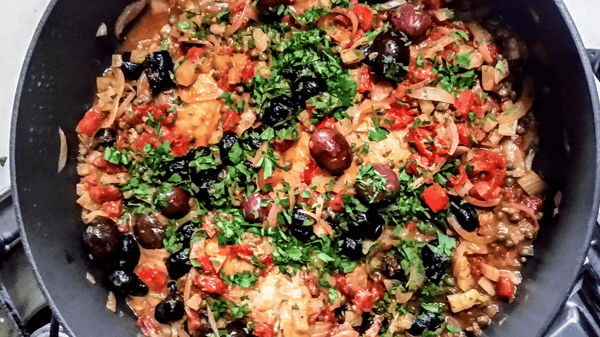 7. Another favorite tagline I have is “stirring is not cooking”; the more you move your food around the less it is in contact with the heat of the pan therefore not cooking and you end up cooling down the pan. So, you are really only stirring every few minutes.
7. Another favorite tagline I have is “stirring is not cooking”; the more you move your food around the less it is in contact with the heat of the pan therefore not cooking and you end up cooling down the pan. So, you are really only stirring every few minutes.
8. If your food starts to caramelize to quickly or your pan starts to burn before your food is cooked through, adding a few tablespoons of water or just enough to barely coat the bottom of the pan will help cool it down, clean it off and transfer more flavor to your food. People often get scared of the build up that forms on the bottom of the pan but we call that “fond” and we are actually fond of it! Having the lid on the pot will create steam and cook vegetables quicker but may inhibit caramelization. Sometimes I will brown my food first and then turn my heat off, put on the lid, and that finishes the cooking process.
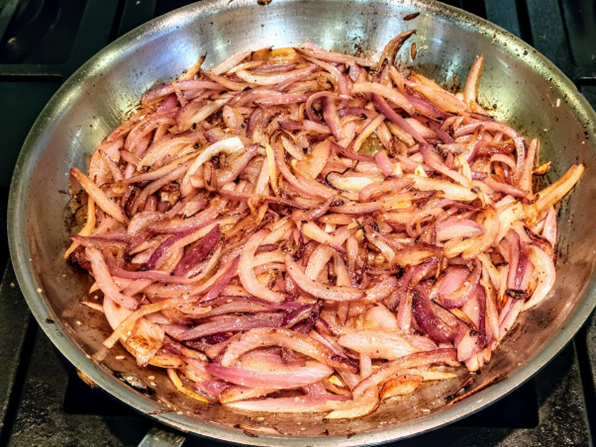 9. This leads us to “deglazing.” I describe deglazing as adding a liquid to the pan in order to cool it down, clean the fond off the pan, and create depth of flavor. Generally, you deglaze with wine, spirits, citrus/vinegar but water can work as well. When you add liquid elements to a sauté, the food absorbs some of that flavor.
9. This leads us to “deglazing.” I describe deglazing as adding a liquid to the pan in order to cool it down, clean the fond off the pan, and create depth of flavor. Generally, you deglaze with wine, spirits, citrus/vinegar but water can work as well. When you add liquid elements to a sauté, the food absorbs some of that flavor.
10. So how do you know when your sauté is done? When all of the food is evenly browned or softened to your liking you know you are done. I generally tell people they need to trust their gut. All veggies should have a bit of a crunch to them. Overcooked vegetables lose a lot of their nutritional value as well. I am always tasting my food as I go throughout the cooking process to understand my seasoning and textures as things cook. The same goes for sautéing! “ABT” always be tasting. A lot of cooking really boils down to personal preference.
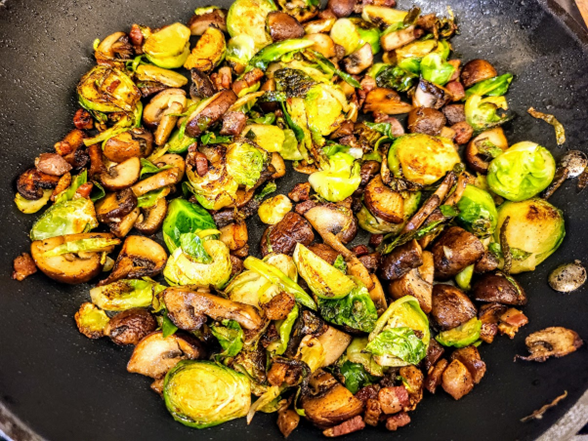 Hopefully these top 10 tips on sautéing help you to become more confident in this method of cooking! If there are other techniques you have questions about I would be happy to answer them in the comments or in our private Facebook group. In our Culinary Boot Camp we dive deep into all the basic methods of cooking to help you become a more competent home cook.
Hopefully these top 10 tips on sautéing help you to become more confident in this method of cooking! If there are other techniques you have questions about I would be happy to answer them in the comments or in our private Facebook group. In our Culinary Boot Camp we dive deep into all the basic methods of cooking to help you become a more competent home cook.


